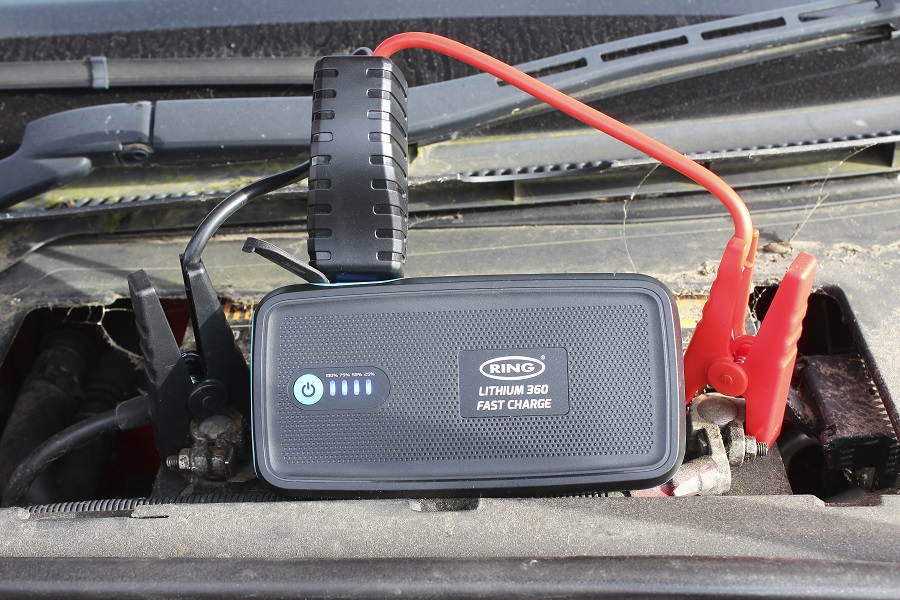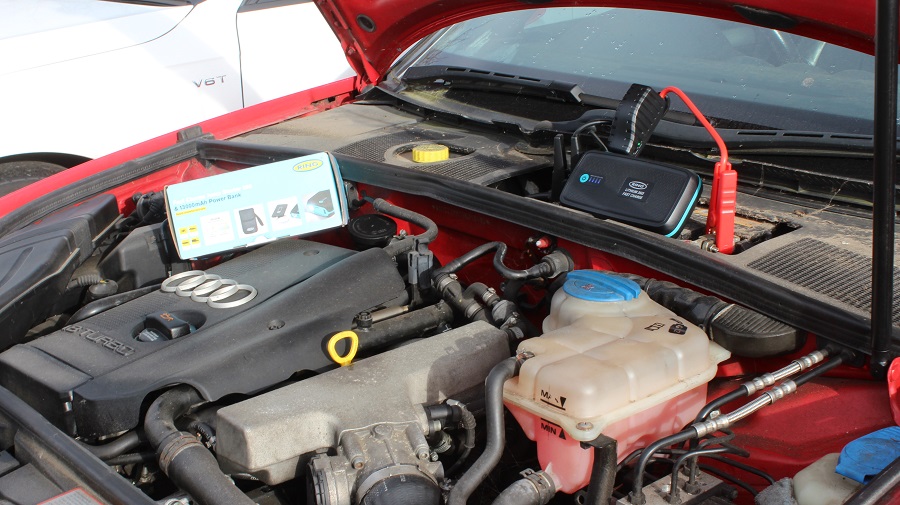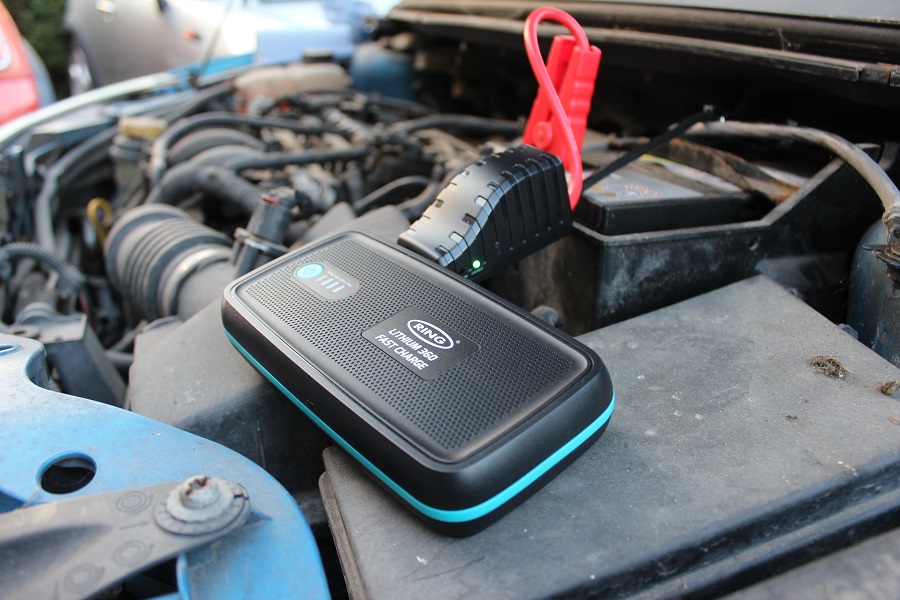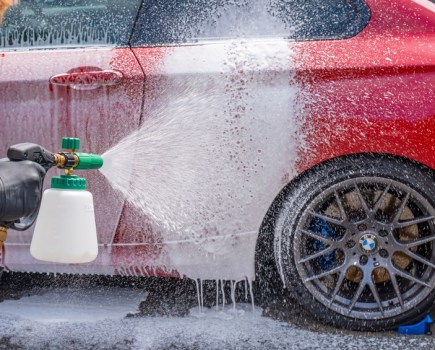We’ve all been there. You hop in the car in the midst of winter and it just won’t turn over. Let’s see if the Ring Jump-Starter 360 could get you out of trouble.
As a motorist with many vehicles, it was always ideal for me to have a jump-starter in the garage. A jump-starter is so much easier to use than using jump-leads from one ‘good’ car battery to the ‘dead’ one. All my previous jump-starters have had an internal battery incorporated into the pack, which makes them rather hefty lumps to haul around. With newer developments, these types of jump-starters are now a tad lighter as manufacturers make use of lithium batteries – smaller, but still packing a punch. Come up to the most recent times and we now have these even smaller pocket-sized jump-starters available – and they aren’t frightened by large engines. To test the usefulness of these devices ourselves, we got hands-on with one of the market’s current options. So, without further ado, here’s our Ring Jump-Starter 360 review.

Specs & Features
This RPPL360 model I’m testing here starts petrol engines up to 6.0-litre and 3.0-litre diesels. And it weighs just 840g – light enough to pick up with one hand. I have used this jump-starter on three of my ‘dead’ cars – they all fired into life within a few turns of the ignition key. What more can I say…
Well, as you can see in the image above, the RPPL360 offers the user a ‘state of charge’ in the form of four blue indicator lights with a power ‘on’ button beside. Once active, you can press the power button for two seconds and a bright white LED light will illuminate on the side of the unit – press it again and the light will perform a SOS light sequence. Then, press it again for a strobe effect.
More impressive though, is that the jump-starter comes with two types of charging cables – both 450mm long – a Type C to Type C and a Type C to USB. You can use either of them to charge the jump-starter or charge other electronic devices via the powerbank facility. Stuff like smartphones, tablets and so on. DP30W Type C charging will recharge the depleted jump-starter in about 1.5hrs, while using the USB cable it will take 4.5hrs. You can use the jump-starter on all 12V batteries including lead acid, EFB, AGM, Gel and Calcium. You should attach the positive lead first and then the negative to the 12V. On the side of the clamps unit a light will illuminate red to show that correct connectivity has been achieved.

The Test
I connected the Ring RPPL360 battery jump-starter to my Audi A4 cabriolet 1.8T, which had sat idle for nearly 12 months. The engine turned over four or five times, then burst into life. The Ring jump-starter made easy work of starting this four-cylinder unit with a dead 096 battery. Connection to my 21-year-old MINI was easy enough – the dead 12V was given a burst of new life by the Ring RPPL360 just as simply.
Once you’ve hooked-up your jump-starter to a dead vehicle, you are advised to wait 30 seconds before operating the ignition key. I usually turn the ignition on and then wait again for another 30 seconds or so to get the ECU talking to various sensors before trying to attempt starting the engine. With the engine running, my advice is to keep the jump-starter in place until it is time to drive off or you decide to stop the engine. On removal, take the negative lead off first.
This is now my go-to jump-starter – lightweight, easy to handle in the engine bay – and has started every engine I’ve tested it on. A cheaper model called the Ring RPPL260 is on offer if you don’t require such a powerful device – this starts engines up to 4.0 petrol and 2.0 diesel and weighs just 720g. If that would suit you nicely, check out the link below:
Words by Martyn Knowles. Review sourced from Car Mechanics.







